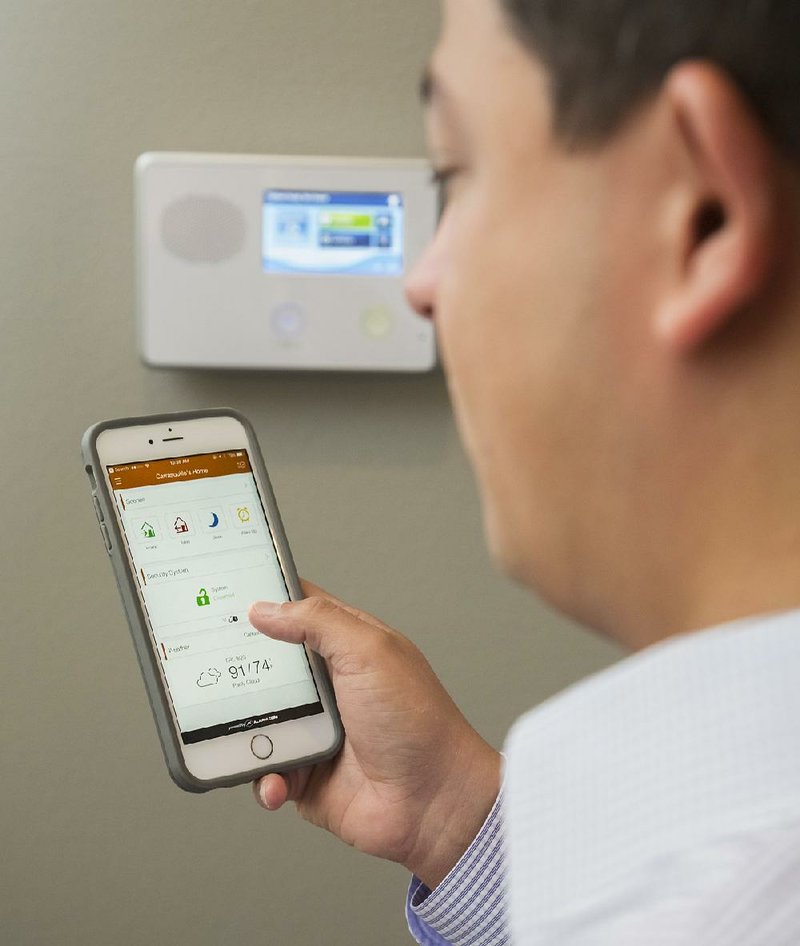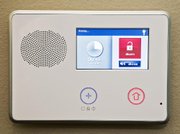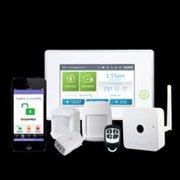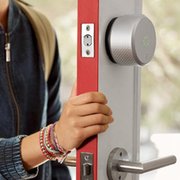Brian Pickett is happy with the user-friendliness and all-around efficiency of the security system he got to protect his first home.
Although he has a landline telephone, Pickett's alarm system is wireless. He opted for the feature that allows him to control the alarm settings through his smartphone, which has an application for the task.
"It's a good convenience for sure, [in light of] the fact that I don't have to be at home to set my alarm or I don't have to be at home to disarm my alarm," says the 44-year-old North Little Rock resident. "In case ... my children want to come by the house, they have a key but they don't have access to the alarm. I can deactivate it and let them in the house. From that aspect, it gives me a lot of flexibility."
That wasn't the case when basic home burglar alarm systems operated via telephone lines.
Just like everything else, those systems have changed with the times -- or rather, with the technology. The number of households using landline telephones has dropped dramatically. According to December 2015 statistics from the Centers for Disease Control and Prevention, 47.4 percent of homes had only mobile phone service for the first half of the year. With the smartphone becoming many people's personal control center and life-management device, it was inevitable that security systems would tap into that.
"Because of the mobile world we live in today, home security needs to be easy for consumers to manage while away from home," says Bruce Mungiguerra, senior vice president of operations for Dallas-based Monitronics. "There is a range of features for home security today -- and the industry has changed more in the past few years than in the previous 20 years."
LOOK MOM, NO WIRES
Rather than depending on hard-wired technology protecting doors and windows, he says, consumers can manage their security systems "directly from their smartphone, tablet or computer, whether [they're] on a business trip or on the beach," Mungiguerra says.
In the past decade, cameras have become the watchdogs and security
guards for homeowners who want security that's proactive, says James G. "Tres" Lumpkin III, co-owner of Benton-based Alert America/Southern Security and an ADT Alarm Systems dealer.
No matter what security company you're with, it's going to take 45 seconds to a minute before an alarm gets to the monitoring center "and for them to call you," Lumpkin says. "Now you've got another time period between that and them reaching the police .... And so you're out about two minutes .... Then, how long does it take the police to show up -- five, 10, 15, 20 minutes? Sometimes never.
"You see the [house] that's got a camera and it's lit up ... what's a burglar going to do?" Find another house, Lumpkin says.
The cameras also can be operated remotely. Surveillance cameras are set to detect motion and can send alerts to a homeowner's cellphone. Even if the homeowner is away, today's wireless alarm systems allow the homeowner to address anyone who comes to the door, making it appear as if someone is home, says Daniel Jackson, co-owner of Beyond Sound and Security in North Little Rock, the company that installed Pickett's system.
"If you're out of town and you have a maintenance guy [coming by] or friend that needs to borrow something out of your home -- you can actually see them from a camera once they get to your front door" -- and, he adds, remotely unlock the door using the smartphone.
THE ALL-SEEING EYE
A new product offered by ADT has brought surveillance-camera technology to a new level: Umbo CV's SmartDome, described as a "cloud-first learning camera," takes surveillance cameras to the artificial-intelligence level. The Umbo doesn't have to be used as part of an alarm system.
Lumpkin demonstrates an Umbo, using his cellphone to show a live feed at his partner's house. The user can select "human," "motion" or "vehicle." If a user hits the "human" button and the camera picks up human activity, an alert will indicate that. It will also indicate "motion" for nonhuman activity; and "vehicle" for any vehicles that come around. The information is automatically recorded on a secure digital card as well as the cloud. Other camera systems pick up motion in general with no distinction made, Lumpkin says. The Umbo also offers a microphone so an absent homeowner can pretend to be on the premises. (The camera costs $298.)
Sarah Bradberry, 33, of Little Rock, has had her Umbo for several weeks and is still exploring its features. She already had a wireless ADT security system, but the Umbo is her first surveillance camera.
"I definitely feel more secure having the camera in place," she says. "If my alarm goes off, I know I'll be able to look and see what is going on if I'm not at home."
Modern, integrated alarm systems are considered a part of smart-home technology. Today's systems can protect not only one's home, but cars, pets and even personal identity, as well as protect homes from fire.
Explains Jackson: "If you're on vacation and you say, 'Well honey, did you turn off all the lights?' 'Oh, no ... I probably didn't,' and then you can get on your phone and check and see what the status of your lights are. ... You go on your app, and dim or turn off those lights.
"You can also use ... geo-fencing," by which customers are tracked through their mobile phones, Jackson says. "When you get within a certain proximity of your home, let's say a five-mile radius, it knows, 'OK, they're within five miles of their home; let's go ahead and turn on their lights' ... so you don't come home to a dark house."
NO-HASSLES INSTALLATION
It sounds like such modern technology would be a chore to install, especially in homes built about a century before mobile phones hit the the market.
Not so, Jackson says. "You can go in and do what's called a retrofit and install all of this equipment," he says. Installation of the 2Gig-brand system he uses, for instance, involves running very few wires -- "just enough to power the unit. And all the devices throughout the home, for the most part, are wireless. They communicate with the control panel wirelessly.
"Back in the day it would take anywhere from two weeks to do a total perimeter security system on someone's home, especially if it's upstairs-downstairs," he adds. Now? "You can just go in ... and probably be out of the house as easy as four hours as opposed to two weeks."
The costs for these security systems vary according to the number of features desired.
A basic security system would typically run anywhere from $350 to $500, says Jackson. Monthly monitoring is $25-$35 per month. For most companies with cell service, the monthly fee averages $30 to $35.
The ADT CellGuard wireless monitoring system costs $99 to activate, then $32.99-$44.99 a month at his company, Lumpkin says. The Umbo alone costs $4.99 a month. A basic, four-camera surveillance system will cost $1,500 to purchase and $75 a month on a 36-month, lease-to-own contract.
SMARTER HOMES
Technology for these systems is expected to advance further.
"We're going to see home security and automation change even more over the next few years, whether it's having more people remotely controlling air conditioning, lighting and door locks, or turning off that coffeepot that was accidentally left on," Mungiguerra predicts.
"Home security will become an even bigger and more personalized consumer experience."
HomeStyle on 10/01/2016






